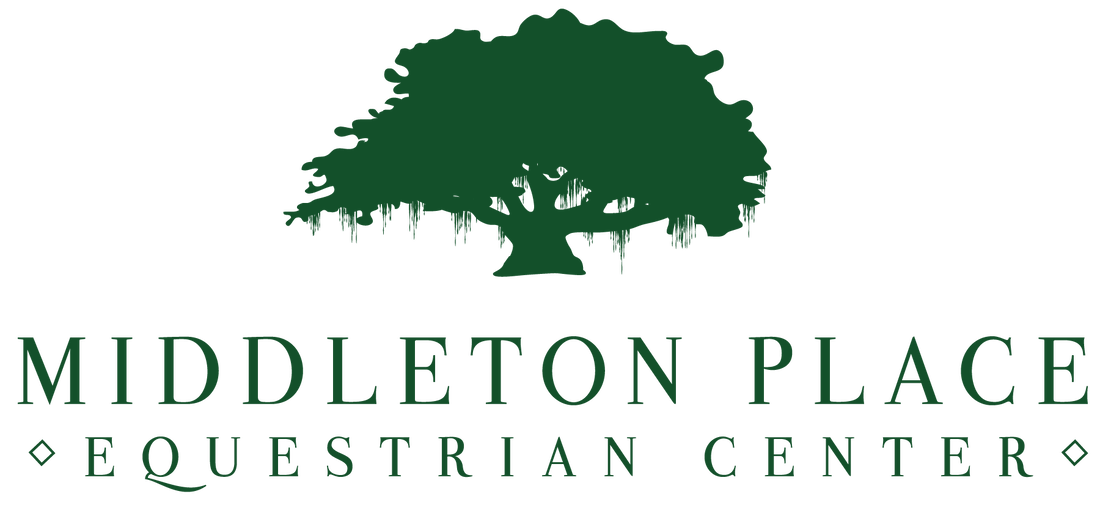|
In this blog, we are going to be celebrating one of the most popular and oldest horse breeds in the United States, the American Quarter Horse.
Hello, trail friends! Welcome back to the blog! With the dawning of this new month, can you believe there is only a matter of weeks left until the new year? While the year is quickly ending and the weather continues to change, all of us here at Middleton Place Equestrian Center are here to offer the best trail rides and horseback riding in the Charleston area. The weather is still perfectly mild and wonderful to ride in. With beautiful trails intertwining through age-old trees, inspiring views of Middleton Place, and a guide to describe the history and stories we've seen over the years, a visit to Middleton Place Equestrian Center is guaranteed to please friends and family! We offer guided trail rides, tours of the property, and equine boarding with the best care. As of right now, due to the pandemic, please note that we are currently only offering historic trail rides! Enjoy the beautiful weather, the wonderful Lowcountry scenery all while social distancing on the back of a horse. We continue to adhere to the Governors guidelines to help keep our staff and clients safe. All saddles, bridles, and helmets are cleaned after every ride. We are very excited and looking forward to seeing all of you for your next ride very soon! While you are waiting to plan your next ride with us, we wanted to turn back to the history books. In this blog we are going to be sharing the history of one of the oldest and most popular breeds of horse right here in the United States; the American Quarter Horse! Considered one of the oldest and most beloved cultivated breeds in the United States, the Quarter Horse is an incredible example of the melting pot that the United States so proudly boasts to be. The breed itself came from a very long line of breeding some of the most influential and powerful horses from across the globe starting as early as 710. The breed itself saw its true beginning in the 1600s, during the early days of the American Settlers, and was officially solidified in the 1800s with the final addition to the breed, the Mustang. With the addition of the Mustang in its breeding, the modern American Quarter Horse was created and America had its own unique horse native to its shores. Wild Beginnings As we mentioned above, the very beginning of the American Quarter Horses' bloodline can be traced back to 710, when powerful horses were being bred between the North African Barb horses and the native Spanish stock horses. These horses were the ones that accompanied some of the very first Spanish explorers into the new world. They were also the same horses that were left behind by these very early settlers, and many of these horses swam ashore and survived multiple Spanish shipwrecks during these tumultuous years. We have talked about one lineage of these horses a few times throughout the blog, and those are the wild Corolla horses that have made the shores of North Carolina their home. These were not the only horse linage that came from these early settlement horses. Some came into the hands of the Chickasaw Indians that were native to Mississippi, Alabama, and Tennessee. Others went out west to become what we know today as the Mustang. When the second wave of colonists made it to the shores of America in the early 1600s, they brought English stock horses with them. These horses helped them settle the early colonies and survive some of the hardest and harshest years of American settlements. Once they were finally settled, decided they were going to stay, and survived those difficult and challenging years, they could finally have a pastime. One of the most popular pastimes of this generation became horse racing. Colonists were no longer fighting every moment to survive, so they could celebrate with a race or two. When this shift in society happened, the first step in breeding the Quarter Horse happened. Many settlers started trading for and riding the Spanish Barb horses that the Chickasaw Indians had cultivated, cared for, bred, and were known to ride. These horses were then bred with the English stock horses, and the first steps of the Quarter Horse were born. These horses would be bred and cared for over the next 150 years, and according to the American Quarter Horse Association, would become known as the "Celebrated American Quarter Running Horses". The name "Quarter" was given to the horses because this was the distance they were trained to run, about a quarter of a mile on flat grounds in and around colonial towns. The next wave in the development of this breed was in 1752 when a horse named Janus was brought over from England. This stunning horse was the grandson of one of the most influential horses for the foundation of the Thoroughbred horse, the Godolphin Arabian. Once Janus was bred with these blossoming colonial horses, the official prototype of the American Quarter Horse was born, according to the AQHA. These were the horses that lead Americans through the American Revolution and into the wild west and the new frontier. Frontier Horses Once the Atlantic coast had been settled, the itch to continue moving out west was born. American settlers began another great push into unknown lands and the Quarter Horse went with them. These horses, known for their short distanced speed, were now being bred for their stock and strength. Through the early years of the 1800s, this early breed of the American Quarter Horse would be bred with the last few bloodlines that would officially solidify the overall breed. Sir Archy was the first in this line, following by two influential horses named Printer and Tiger. The final piece of the puzzle to the American Quarter Horses bloodline was the powerful Mustang. These free-roaming horses, ancestors of the horses the Spanish explorers left behind, were what made the Plains Indians the strongest mounted warriors that anyone had ever seen, according to AQHA. These new powerhouse horses took settlers out west, help clear and plant this new land, and became the favorites of cowboys and farmers alike. Their strong, stocky, and muscled bodies were perfect for the harsh life and beginnings of the great west, and their gentle dispositions were perfect for caring and interacting with cattle. While farms started to spread across the frontier, so did vast cow farms, all thanks to the Quarter Horse. They were once used as sheer entertainment, and how now become the force of breaking into the frontier. Modern Marvels Today, these beautiful creatures are still bred to have the same features and personalities that broke open the wild west, they just aren't used to forge new lands and farm as they once did. Thanks to the foundation of the American Quarter Horse Association in 1940, the breed became official. New steps were now being taken to preserve the breed. Breeding the Quarter Horse follows incredibly strict guidelines today, and it is dedicated to perfecting the bloodline. The foal has to come from a registered mare and sire to be recognized by the association. They are only allowed to have very limited white markings on their faces and below their knees. There are also only 13 accepted colors recognized by the AQHA ranging from reddish-brown to a stunning grey. They are still known for their muscling, their gentle natures, temperament around cows, versatility, and sprinting speed. While they can still be used for farming, modern technology has moved the Quarter Horses focus and training towards excelling in almost every racing and skilled event that is popular today. With its versatility, the Quarter Horse has become known as one of the most popular breeds, with riding for enjoying being their owner's favorite form of recreation. What a stunning breed and powerful history! They are such influential horses that it is almost impossible not to come across a Quarter Horse at least once in your lifetime. You might even meet one or two at our stables! We hope you enjoyed the history of the Quarter Horse, and we hope this blog has inspired you to book your next visit with us! Until next time, stay safe and stay hopeful everyone!
2 Comments
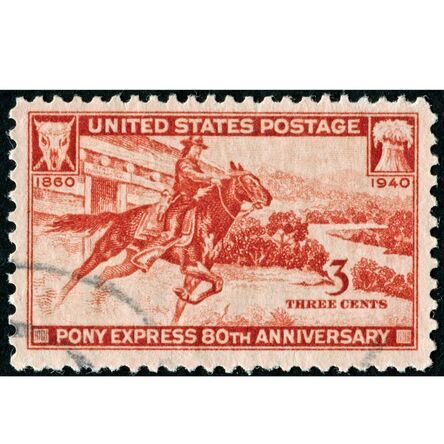 Horses have been apart of some of the most important and iconic events and moments in history. In this blog, we are going to be talking about the history of the Pony Express. Hello, everyone! We hope you've stumbled upon our blog to learn more about the best horseback riding trails in South Carolina! This weather is so perfect to be on our trials. As the weather slowly starts to turn you'll see even more beauty that the Lowcountry has to offer. Make sure to book your historic trail rides today, we can't wait to see you! We've gotten to thinking through all the historic research we've been doing for our recent blogs, and we realized that horses have been apart of some of the most important and iconic moments in the early history of the United States. Up until the early 1900s when Henry Ford made the car affordable and accessible to almost every American, the horse was right there getting us to and from everyday tasks and events, some that would forever change our everyday lives as a country. One of the most iconic events lasted a very short amount of time but has remained in history's spotlight, in our textbooks, and in our hearts ever since it ended. Today, we are going to be talking about the history of the Pony Express. The Pony Express only lasted for two years and made less than 400 runs, but it is still one of the most iconic parts of our history. Its story has lasted because of the endurance and bravery of its riders and its connection to famous people like Mark Twain and Buffalo Bill Cody. Cody was one of the Express's most famous promoters, but he never actually rode for them! He was much more of a showman. The Pony Express was born when our country was under huge changes both politically and personally. Imagine America right after the gold rush, right as Abraham Lincoln became president, and when the country was right on the brink of civil war. It was born when information needed to be delivered as quickly as possible, but a mode of transportation was not yet available. The Pony Express changed all of this. The Pony Express riders helped deliver news faster than ever before all thanks to the powerful horses that these brave riders rode. They cut down the time to carrying news from what could be a couple of months down to a few days. They did this by adding more relay stations and making use of the telegraph, according to National Geographic. Individuals could now stay in touch with their loved ones, no matter where they lived. It wasn't just private individuals that were benefiting from this new form of news delivery, newspapers and magazines relied on getting their information from the Express, too. For a total of eighteen months, the Pony Express delivered the mail faster than ever before between April 1860 and October of 1861. It helped tie the east to the west carrying some of the most important news of the time. Young men would ride what would later become the Pony Express National Historic Trail, covering eight states. It was the most direct form of communication of its time between Missouri to California. They could ride up to 1800 miles in just ten days. Millions began the move out west in the mid-1840s because of the gold rush and the Mormon exodus, according to The National Pony Express. With so many people on the other side of the country, a new form of communication was needed. In came William H. Russell, Alexander Majors, and William B. Waddell. They created The Central Overland California and Pikes Peak Express Company to deliver mail from one end of the country to the other. This would later become the Pony Express. According to the National Pony Express, shortly after the Express was created, congress authorized a bill to build a telegraph line that would run from the Missouri River to the Pacific Coast. While the line was under construction, the Pony Express delivered its letters, news, and newspapers. When the telegraph line was finally finished in 1861, the Pony Express shut down. Its last letters were delivered in November of that year. Even with its short history, it has become embedded into the history of the Wild West thanks to Wild West shows that traveled across the country and even into Europe. Ironically, these shows and the stars that made them famous (like Buffalo Bill Cody) were famous much after the Pony Express ended. It still raised public awareness about the Express and kept it alive in history. Even though it has been kept alive, a lot of the history is full of inaccuracies, wild stories, and myths according to National Geographic. Almost no records survive of this famous 18 month period. The young men who were riders for the Express would ride up to 100 miles a day and sometimes up to four times a week. They all had to follow some very strict rules like no drinking or cursing, according to National Geographic. They were facing every kind of challenge nature could put in front of them and in some of the most dangerous parts of the country. Through snowy mountain passes and dangerous deserts, they made their rides. They came into contact with Native Americans and wild animals, and all kinds of other perils. Some Pony Express riders were killed and some stations were burned down after relations between Native Americans and Americans were heated. Service even stopped in certain areas because of it, but after the stations were rebuilt, service went back to normal. Today, it continues to live on in colorful stories, reenactments, and historical locations that you can visit. Most of the original trail doesn't exist any more thanks to modern roads, construction, and time. What is believed to be left of the original trail can be seen in Utah and California. According to the National Pony Express, some 120 historic sites might soon be available to the public. What do you remember learning about the Pony Express? Have you ever visited any of its historic locations? It's incredible how much history horses helped shape and carry thanks to each ride those young men went on. Imagine how different our world would be without them! Until next time, stay safe and stay hopeful everyone! One of the most mysterious and stunning horse breeds of all time is the Gypsy Vanner Horse. Have you heard of these beauties? We can't wait to introduce you to them!
Hello, Lowcountry! We hope this blog finds you healthy and happy! Things are going well on our trails. Our fantastic guides are ready to lead you on an exciting adventure with our beautiful horses. We are currently offering our historic trail rides. These rides are the perfect choice to enjoy the beautiful local landscape and to learn a little bit about the history of Charleston. We have thee trail rides every day, one at 10 AM, 12 PM, and 2 PM. If you're planning on joining us, please arrive 15 minutes early. If you're a first-time rider or a first time guest on our trails, please visit our FAQ page. If you happen to have any questions, please don't hesitate to reach out to us. Please visit our "Book Your Ride" page on our website to book your next trail ride with us today! Did you happen to watch The Kentucky Derby after reading our last blog? We hope everyone who did still wore their favorite Derby outfits while enjoying a Mint Julep or two! Our congratulations to Authentic and his trainer Bob Baffert for winning in a surprising and very dramatic turn of events. Authentic pulled right in front of Tiz The Law who won The Belmont Stakes and was favored to win the Derby. We are sure you're just as excited as we are to see who will win The Preakness Stakes on October 3rd! There are many stunning horse breeds across the globe, a few of which we have talked about in past blogs. What many of our readers might not know is that new breeds are still out there and are still being introduced to the United States. One of the newest breeds that have come to the United States and received almost overnight popularity is the Gypsy Vanner horse. Thanks to Dennis and Cindy Thompson, these stunning horses first immigrated to the United States in 1996, and the Thompson's established The Gypsy Vanner Horse Society. In 2015, there were over 4000 Gypsy Vanner horses registered in the society, and they are still incredibly popular today. From the beginning the society has been dedicated to breeding preservation, learning about the culture that created this selective breed, and staying true to the breed itself. They do so through education, evaluation, and horse registration. These magical and striking horses have a very interesting story. For years, the Englishman didn't care for horses that weren't a solid color. Horses that had spots or splotches on them were most often found in Ireland and the surrounding areas. These colored horses were very often cast-off in English culture. Thanks to the English the Gypsy culture was introduced to these beauties and instantly fell in love with them. These Gypsies were predominantly found in the British Isles. There is a lot of speculation as to why they decided to selectively breed what would become the Gypsy Vanner. The most popular speculation is that the Gypsy culture wanted a sturdy and strong horse with an amazing temperament that was stunning to look at. After years of careful breeding, that is exactly what they achieved. These beautiful horses and their breeding went undocumented until almost the 1940s. Once WWII arrived, the horses were finally cataloged and traced as a true breed. These stunning horses are a mix of very impressive horses; the Shire, the Clydesdale, and the Pales. They are cold-blooded horses, which all feather horses are according to the GVHS. They are shorter horses ranging between 12.2 to 16 hands. They are stocky and strong like a Clydesdale and have a draft-type build. They are perfect for riding and driving, and for any level of rider. They are very easy to train and have calm and sweet personalities. They are wonderful with children and for older riders who might have a difficult time getting on and off their horse due to pain and age. When they came to America, the Gypsy Vanner didn't have an official name. Thanks to the Thompson family, the name they decided upon honored their origins and the skill they were originally bred for. Named for the Gypsies that bred them and the caraVAN that they were bred to pull, the official name of Gypsy Vanner was born. While they were bread to match and pull the stunningly decorated living caravan wagons that the Gypsies once lived and traveled in, the use of these wagons is now just for show and fun. While this way of life may have turned into fun, the beauty and the strength of these horses remain. The Gypsy Vanner can come in a variety of colors, but they are most often found in skewball, which is a mix of black and white, or piebald, which is a mix of brown and white. When you see a Gypsy Vanner for the first time it is very easy to confuse it with a Palomino or Paint horse, but pay close attention, you'll be able to spot the differences. Gypsy Vanners are known for an abundant amount of hair in their manes and tails. They can have double manes, and they can grow their manes down past their knees. The stunning feathering they are known for begins at their hock and cascades over their powerful hooves. With such incredible temperament, strength, and ability to train, the Gypsy Vanner sounds like the picture-perfect horse. Honestly, this isn't far from the truth. One of the very few downfalls is the upkeep they require for their stunning manes, coats, and feathering. Extra care has to go into their grooming to keep them safe, healthy, clean, and ready to show. They also come with a high price tag. If you are interested in purchasing a Gypsy Vanner, we encourage you to consider the responsibility and care that comes with these beauties before officially buying one. Rising in popularity, these horses are being seen more frequently at shows and in competitions. Due to their popularity and price tag, it will be very hard to find one to adopt. The best way to go about owning one is to go through a private breeder. These horses are truly something special. If you haven't seen one in person, make sure to make that a priority. We do not doubt that it will be love at first sight. Until next time, stay safe and stay hopeful everyone! 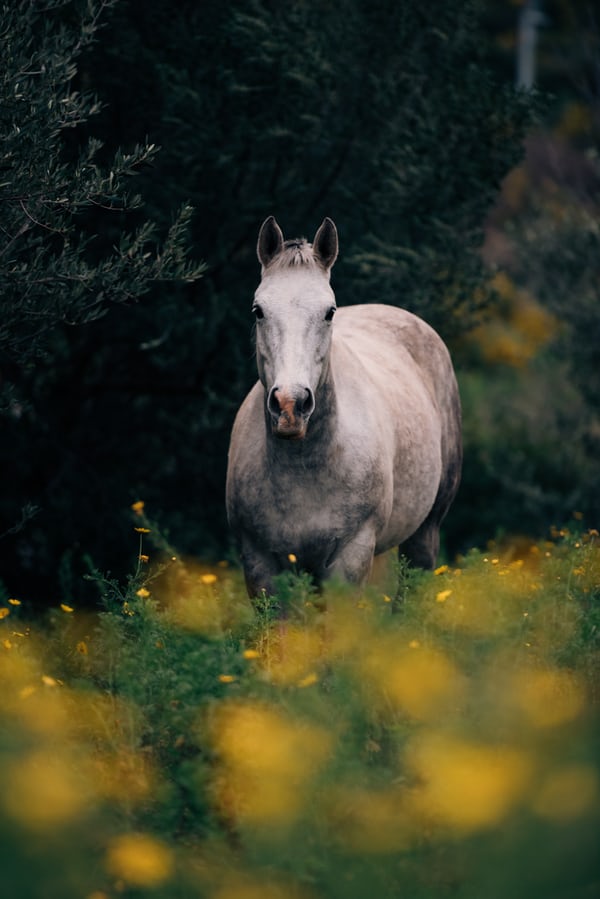 These beautiful creatures are full of surprises. Their unique personalities, how they interact with one another, and the things we discover continue to surprise us. So much so, there are hundreds of interesting and bizarre facts about horses out there, and many you might not know! We are getting one step closer to some sense of normalcy every day. As we mentioned in our last blog, we've been taking extra care of our horses, barns, equipment, and stables to make your next ride with us very safe. Make sure you're paying close attention to our website or give us a call for all of our latest information. We are currently open for our historic trail rides, which are not to be missed! Enjoy this beautiful weather and the wonderful Lowcountry scenery, all while social distancing on the back of a stunning horse. We are adhering to the Governor's guidelines to help keep our staff and clients safe. Please reach out to us regarding any specific questions or services, and we hope to see you real soon. It's very easy to book your next ride with us on our website or to send us a message. We are here for you and continue to offer the best trail rides in Charleston! In our last few blogs we've scaled the spectrum of topics. From ways to ride your horses, staying sanitary, to myths and legends, we've offered a slew of new things to learn about. Education is something we deeply appreciate and cherish. We love watching new riders of all ages hop on a horse for the very first time, and continue coming back as their love and appreciation grows for these amazing creatures. As the virtual school year has a few more weeks left, we hope that parents will bring their children to our trails for a field trip or stumble upon our blog. In that vein and the spirit of continued education, we wanted to share some interesting and bizarre facts that you may or may not know about horses! We would love to hear from you after you read this blog. Comment what facts you found interesting and what you learned. Don't hesitate to share and post this for all of your friends and family to enjoy, too! INTERESTING FACTS
BIZARRE FACTS
These are just some of the interesting and bizarre facts about horses that are out there. These gentle creatures are very complex, and in the 5000 years they have been domesticated, we continue to learn more and more about them. What facts did you learn today? Did anything surprise you? We would love to hear from you! Until then, please continue to stay safe! We are Charleston's premier horseback riding trail, dedicated to keeping you safe while exploring the beauty of the Lowcountry. 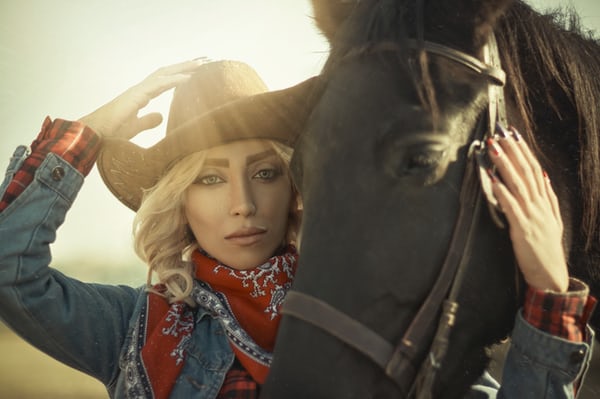 Many of us dream of being in the limelight one way or another. Who could have ever thought that horses share that same interest? Or that a horse could help bring their owners into the limelight with their incredible talents and beauty? Here is a little story behind some of the most famous horses and their equally famous owners. Famous people come to the Lowcountry every day. You can walk down King Street in the summertime and spot a star or two, or while you're sitting at your favorite restaurant in town someone famous could be sitting at the table next to yours. With our beautiful beaches, excellent food, amazing horse riding facilities, and perfect weather, Charleston offers the best of the best. More films and TV shows are being filmed in Charleston every year too, and stars of the silver and smaller screens are becoming a permanent fixture in our beautiful city. Beyond the stars that call Charleston their home or their favorite vacation spot, can you name any horse who has become famous on the big screen? Can you name a famous fixture in history who was known to be an amazing horseman or woman? You might be surprised to know there are many in both categories. Many modern celebrities love their horses or fall madly in love with them while working with them on set, but this list offers a little more than just that! Roy Rogers Many think of this handsome horseman as a TV and movie star. Which is 100% correct! Trigger, a stunning Palimino, was hist faithful horse and companion. To this day Trigger has become one of the most famous horses in film history, and Mr. Rogers was not too far behind him. Trigger stood at 15.3 hands tall, and was born on July 4th, 1943 and died on July 3rd, 1965. A child growing up during Trigger's lifetime knew who he was and that he was a cowboy's best friend. This beautiful horse used his fame to inspire so many, and never let stairs or elevators get in the way of a hospital or shelter visit. When he was born, his name was Golden Cloud. He was sold to the Hudkins Stables of Hollywood when he was three years old. This particular stable supplied horses exclusively for the TV and film industry. He appeared in his first film, "The Adventures of Robin Hood", and was ridden by the incredible Olivia de Haviland in 1938. Around the same time, a very handsome young cowboy who loved the movies changed his name from Leonard Slye to Roy Rogers. He chose the name so he could sound a little bit more like the cowboy he was. A real cowboy, now staring in his film, needed the perfect horse. That perfect horse was Golden Cloud. Rogers knew he was his match from the very first moment he rode him. Trigger earned his new name when a fellow actor of Rogers' noticed how quick he was, similar to Rogers' quick draw with a gun. So, he suggested the name, and it stuck. When their first movie together, "Under The Western Stars" made its premiere, one of the most important duos of all time was born. Knowing Trigger's popularity would continue to soar, Rogers couldn't bear the thought of someone else riding him or taking him away. So, he jumped into action and bought Trigger for his own for $2500, a mighty big sum at the time. Rogers paid in installments, and it was one of the best decisions he ever made. The duo soared to success, making one another more famous than they could have imagined. Trigger appeared in all 88 movies Rogers was in and in all 100 episodes of the Roy Rogers show and was a part of Roger's life until he died. He couldn't bear to see him buried, so he was taxidermied and was on display at multiple museums until the early 2000's when the last museum he appeared at shut down. Queen Elizabeth and Burmese The Royal family has been known for their deep love and appreciation of horses for generations. Queen Elizabeth has been one of the most prominent members of the Royal Family who has always loved and dedicated a large part of her life and time to her horses. Thanks to historical TV shows like "The Crown" we have gotten a front-row view of her love of horses and the passion she's had them from the time she was a very little girl. She had her very first pony at the age of three and is still known to ride today at the age of 92. To this day the royal family breeds some of the best horses in the UK, their horses winning almost every race in most recent history. From a very young age, Queen Elizabeth has owned and loved many spectacular horses. The standout of these beauties being Burmese, a stunning black mare that was gifted to her by the Royal Canadian Mounted Police in 1969. For 18 years, the Queen rode Burmese in the Troping The Color Parade, a parade given in special honor of her birthday. She rode Burmese next to President Ronald Reagan, and she was also riding Burmese when in 1981, 6 blank shots were fired at her during her birthday parade. The stunning horse stood strong for her beloved Queen, who recovered almost instantly and continued riding with her head held high. Burmese was retired in 1986 and put out to pasture at Windsor Castle until her death in 1990. She is buried on the grounds of the castle, which is an extreme honor and a very unique one. The Queen had a statue commissioned in honor of Burmese's life, and today it stands in front of the Saskatchewan Legislature Building in Regina, Canada. This was the providence that Burmese was born. In the UK's history, the Queen has been ranked as one of the top horse breeders. She has also been ranked as one of the highest-profile horseback riding devotees in the world. Burmese was born in 1962 and was trained by corporal Fred Rasmussen. The Queen rode her daily when she was staying at her country house, not just during her birthday parades. She was a stunning sight to see when she was being ridden and is still remembered as one of the most beautiful horses in royal history. Mr. Ed We can't talk about famous horses without mentioning Mr. Ed, of course! This popular children's show stole the hearts of the nation and Mr. Ed was at the center of that love. The TV show focused around the friendship between Wilbur Post (played by Alan Young) and Mr. Ed, his talking horse (voiced by Alan Lane). Mr. Ed was named Bamboo Harvester off the big screen and was a stunning Palomino. The majority of the show is about Mr. Ed offering his best friend, Wilbert, advice on life. More often than not, he got Wilbur in trouble because Mr. Ed would only talk to Wilbur and no one else. The show was popular around the world, and long after it went off the air in 1966. The show aired from 1961 to 1966, and believe it or not, no one wanted to pick up the show at first. It took a year of private backing before it was picked up, but once it was the show was a smashing hit. Bamboo Harvester was born in 1949 and was trained by Les Hilton. Hilton was able to teach him to move his lips every time his hoof was touched. Peanut butter could also be used to get his lips moving so it looked like he was talking. Bamboo Harvester died in 1971 after an incredible life and career. No one knows exactly how he died, many stories are floating around Hollywood about it. The most probable story of them all is that he died from heart failure. A little known fact about the show, one of the most famous film cowboys of all time, Clint Eastwood, was on the show too! There you have it! Some of the most popular horses and their celebrity counterparts of all time. Historically hundreds of horses could be added to this list. Horses have been used from the dawning of time to help conquer, protect, and build civilizations. They have journeyed from building the world to creating a world on the big screen. Who is your favorite TV or Film horse of all time? You never know, the next time you come take a ride at Middleton Equestrian Center, you might be riding the next big star Charleston will ever see! 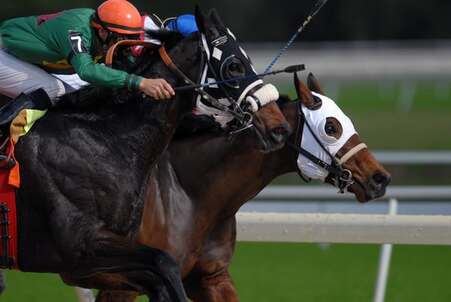 It was such a joy to walk down the honored halls of some of the most famous horses of all time that we couldn't just limit it to one blog. It was hard enough to pick just a handful to celebrate, but it's been such fun to comb through their history and share their stories with you! Happy November, Friends! Have you stopped by to enjoy the cool weather and beautiful foliage on our riding trails yet? It's starting to get chilly - so make sure you come to see us soon! While you are waiting for your next ride, we wanted to continue our history lesson with some of the most famous horses of all time. We are moving forward with Seabiscuit and Seattle Slew! SEABISCUIT This amazing horse was the grandson of Man O' War, one of the horses we discussed in our last blog. Ironically, Seabiscuit didn't show any racing qualities until later in life and was on the smaller side. He was born in Lexington Kentucky on May 23, 1933. Just two years later he made his racing debut at Hialeah Park in Florida on January 19, 1935. Thankfully he was purchased by Charles S. Howard after his first few unsuccessful racing seasons. He lost 17 races in a row before Howard found him with trainer Tom Smith. They found Seabiscuit 200 pounds underweight, exhausted, and in a terrible temperament. He needed rest, relaxation, and to heal before anyone raced him again. That's exactly what Smith gave him, and he came out of his vacation a brand new horse. With the help of Smith and his jockey Red Pollard, Seabiscuit won 11 of the 15 races he entered in 1937. Pollard was a bit of a controversial jockey. He was much bigger than most and was blind in one eye. But both underdogs took to one another right away, and the pair became famous virtually overnight. His popularity soared during the Great Depression and gave the country something to hang on to. He was named Horse of The Year in 1938 and was the champion handicap horse in 1937 and 1938. One of his crowning moments, known as the "Match of the Century", was when he defeated Warm Admiral in 1939 at the Pimlico Race Course in Baltimore, Maryland. War Admiral was considered the fastest horse of his time, and no one saw this race turning out the way it did. Seabiscuit retired in 1940 and went on to inspire many books, movies, and a major motion picture in 2003 with Toby McGuire, Chris Cooper, and a full star-studded cast. In his six racing seasons, Seabiscuit won 33 of his 89 races with a total winning of $437,730. At the time this was a record for an American Thoroughbred. Just a few days shy of his 14th birthday, Seabiscuit died of a heart attack and is buried at Ridgewood Ranch in California. SEATTLE SLEW This stunning horse was born on February 15, 1974. His owners were Mickey and Karen Taylor and Jim Hill of Tayhill Stable. His parents were Bold Reasoning and poker mare, My Charmer. No one expected much from Slew when he was born, but thankfully someone gave him a chance. The moment he hit the race track, he was a born runner. When Slew was born he was described as ugly, He was an almost all-black bay, something that didn't catch the eye. He had big floppy ears and a very big personality. He was big for his age, and very clumsy when he first started. He needed time to grow into his body, and to learn how to become the powerhouse he was destined to be. He was bought by Tayhill Stable at a steal of $17,500 in 1975. He was then trained by Bill Turner, and under his tutelage Slew learned quickly and had great confidence in his skills. At three years old he made his career debut with jockey Jean Cruguet, who helped him make a 5 length victory at Belmont Park on September 20th, 1977. He went on to win the Triple Crown that same year. Slew was the 10th Triple Crown winner for the United States and the first to complete the series with an undefeated career record. Through his career years between 1976 and 1978, his total earnings were $1,208,726. He had 17 starts, 14 first place wins, and 2 second place wins. Just two months before he was set to retire he defeated the heir to the Triple Crown, Affirmed, in the Grade 1 Marlboro Cup at Belmont Park. After he retired, he sired more than 100 stake winners. He was the only stakes winner to sire a Belmont winner, A.P. Indy, who also sired a Belmont winner, Rags to Riches. At the tender age of 28, Slew passed away 25 years to the day he won the Kentucky Derby. These amazing horses have such inspiring stories to tell. We are inspired by them daily and the legacy they have left behind. We have loved walking down memory lane with you and look forward to the next time we meet. See you at the stables! What are the Corolla Wild Horses and where did they come from?
All of us here at Middleton have always known that there was something very special about the beautiful and majestic horse - and the beautiful beaches that line the coast of the Lowcountry and her sister states. So, what happens you combine the two? Something truly spectacular. If you have ever traveled a little north of the Lowcountry and into the Outerbanks, you might have heard about the Corolla Wild Horses, a herd of very special horses that come from a mysterious and long line of majestic ancestors. The Corolla Wild Horses are such a special attraction and are so beautiful because they are such a mystery. How did they get to this side of the world and who introduced them into the wild? Today around 400 wild horses making up several different herds that live on the North Carolina stretches of the Outerbanks. They can be spotted between Cape Lookout and Corolla. These incredible animals have survived hurricanes, human settlers, and everything else in between. Even though these horses are wild now, they are descendants of domesticated horses. Many historians believe they are direct ancestors of the Spanish Mustang. But really, how did they arrive here? During the days of early exploration and settlement from Europe to the America Colonies, many Spanish ships were caught in the dangerous shallows along the Outerbanks called the Graveyard of the Atlantic. Many Spanish ships that were attempting to come to the early colonies and sunk in this graveyard have been found, many dating back to the early 1500s. The Corolla's ancestors could have come from any of these ships because don't forget - horses can swim. They could have been on these ships and have swum to shore after they sunk and took refuge in their new surroundings. But more likely, the Corolla are descended from Spanish Mustangs that were left behind by Spanish Settlers who had to abandon them and head back to their ships after being threatened by Native Americans, sickness, or failure to settle successfully. But let's dig a little deeper into their mystery shall we? As I stated above, the history of these horses dates back almost 500 years, making them the oldest settlers in the Outerbanks. The Native Americans are the only other group that is older to American soil than these majestic creatures that first called this land home. Spanish settlers probably brought these horses to our shores, but when? What explorations? One of the first possibilities is that they could have arrived in 1521 with some of the very first explorers to the coastline with Lucas Vasquez de Allyon, a Spanish Explorer. Some speculate that this exploration party landed near Cape Fear and made it as far down in their journey as the Outerbanks. The Native Americans were not thrilled about these new visitors and were not welcoming to them at all. They killed them or forced these explorers to leave quickly and retreat to their ships and leave behind their livestock and crude settlements. There is some thought that the Corolla horses started their lineage here, as their ancestors would have been the livestock left behind. A second, more plausible option, happened 60 years later as Richard Greenville was making his expeditions along the North Carolina Coast. His commander, Sir Walter Raleigh, made regular trips along with the West Indies to the early colonies of North Carolina and Virginia to deliver goods to its settlers and had Greenville many of these trips himself. In 1587, Greenville was leaving the West Indies set to deliver goods for his commander to the colonies. Greenville, as historical records go, hit trouble along Cape Fear and then again when the ship hit the shallow waters in the Graveyard of the Atlantic in an area called Diamond Shoals. At least one of the ships that was lost during these troubles contained live wild stock. The animals that survived the sinking could have swum and made it to shore. Some of these animals were also believed to have been the Spanish Mustangs. Even though these two historical options are the most documented options, these are plenty of other speculations. But no matter their origin, the mystery of their appearance has been one of their biggest assets. After having been undisturbed for almost 400 years, the herd was almost pushed to extinction in the late 1980s and early 1990s. The herd hit a record low of 40 horses due to inbreeding, eating bad food, and being hit by vehicles. The herd was moved to a more stable beach that could support their needs and promote their growth. But now, thanks to being protected by the National Park Service, the state of North Carolina, and by private funds and sanctuaries, they are ensured to remain for many more generations to come. They are an amazing gem, and truly something special to behold. Now, with a rich history and healthy numbers - the Corolla Wild Horses will remain a beautiful staple of the Outerbanks. If you have the opportunity to encounter them, take the chance. You won't want to miss out on seeing these myster |
AuthorMiddleton Place Team Archives
January 2021
Categories
All
|
|
4280 Ashley River Road, Charleston, SC 29414
[email protected] 843-735-0709 Please also visit: Middleton Place | The Inn at Middleton Place |
Site powered by MadeSimply
|
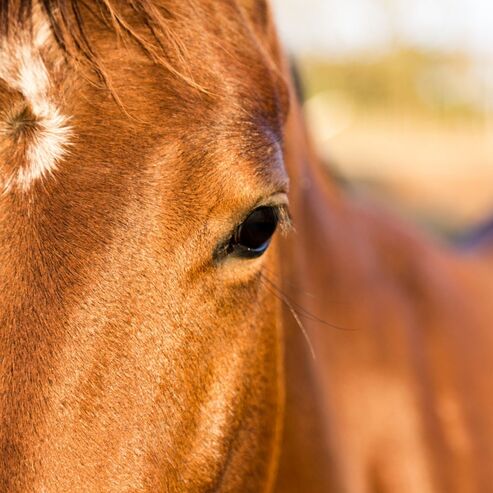
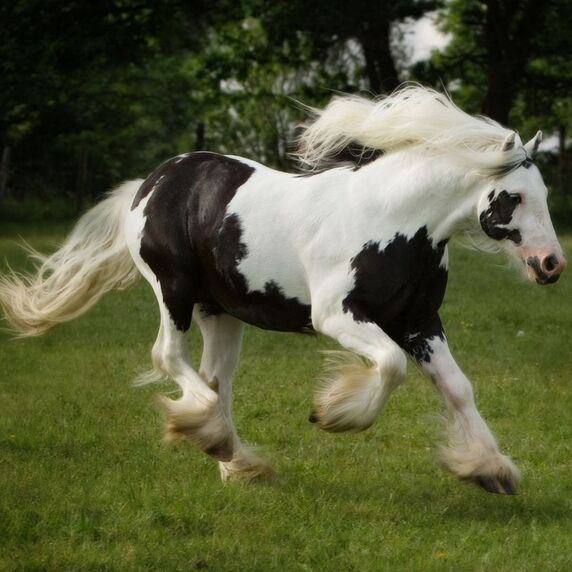

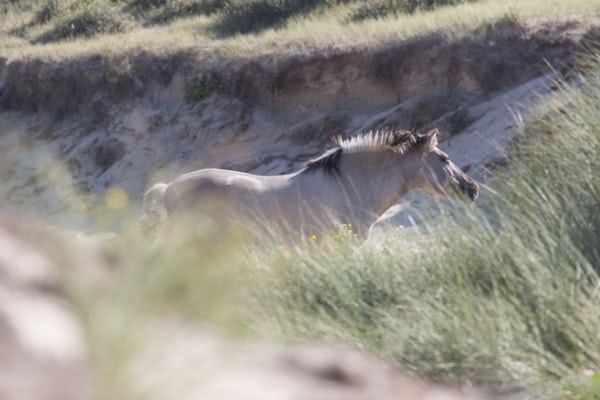
 RSS Feed
RSS Feed

